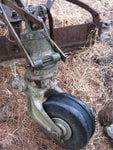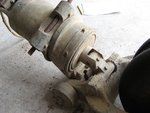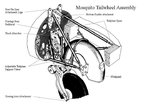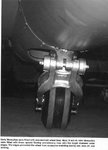<simon>
Airman 1st Class
Hey everyone,
I recently aquired an original De Havilland Mosquito tailwheel i am seeking advice on how to restore/preserve this unit.
There are small corrosion pits over most of the assembly and one of the axle arms has worn down to the point where there isnt much aluminium holding the wheel in place.
I am wondering if anyone knows the existence of De Havilland plans/drawings/sketchs which would help in the disassembly of the tailwheel.
One thing i have figured out is the spring inside the shock absorber must be still under huge force -between 200kg and 2 tonne! Quite a large and..ummm..dangerous force!
Any advice or info would be useful.
I've attached a couple of pictures (i think) if they help at all
Thanks
Simon
I recently aquired an original De Havilland Mosquito tailwheel i am seeking advice on how to restore/preserve this unit.
There are small corrosion pits over most of the assembly and one of the axle arms has worn down to the point where there isnt much aluminium holding the wheel in place.
I am wondering if anyone knows the existence of De Havilland plans/drawings/sketchs which would help in the disassembly of the tailwheel.
One thing i have figured out is the spring inside the shock absorber must be still under huge force -between 200kg and 2 tonne! Quite a large and..ummm..dangerous force!
Any advice or info would be useful.
I've attached a couple of pictures (i think) if they help at all
Thanks
Simon





